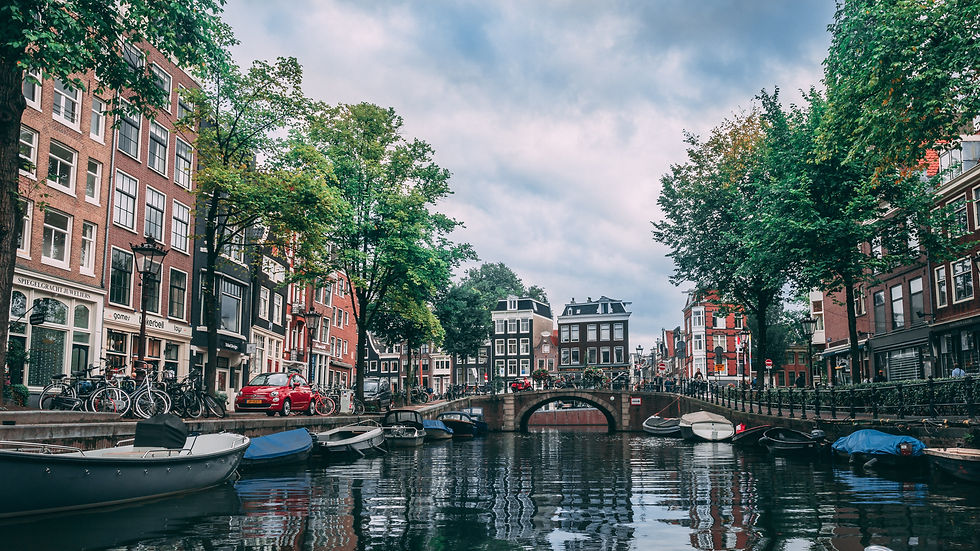Infrastructure Development in Real Estate: Netherlands vs. Manila
- bedandgoinc
- 2024年2月2日
- 読了時間: 4分
Date: 2/2/2024
Infrastructure development in real estate is a critical factor influencing urban growth, sustainability, and livability. This blog post will explore and compare the approaches and challenges of infrastructure development in real estate in two distinct locations: the Netherlands and Manila, Philippines. These regions offer contrasting landscapes, economic conditions, and urban development strategies, providing a comprehensive view of how different environments shape infrastructure development in real estate.
The Netherlands: Pioneering Sustainable and Innovative Infrastructure

Historical Overview
The Netherlands, known for its below-sea-level topography and intricate canal systems, has a long history of innovative infrastructure development. The Dutch have been leaders in water management and sustainable urban planning for centuries. This expertise has translated into their approach to real estate development, where sustainability and innovation are at the forefront.
Current Trends and Strategies
In recent years, the Netherlands has focused on developing smart and green cities. Key trends include:
Sustainable Urban Development: Dutch cities are emphasizing green building materials, energy efficiency, and sustainable construction practices. Amsterdam's Eastern Docklands and the Eindhoven Brainport Smart District are prime examples.
Integrated Transportation Networks: The Netherlands boasts one of the best public transportation systems in the world, seamlessly integrating cycling, rail, and road networks, thereby reducing reliance on personal vehicles and supporting sustainable real estate development.
Water Management: Given the country's unique geographical challenges, Dutch cities have become adept at integrating water management into urban planning. This includes floating homes and offices, water storage facilities, and climate-resilient infrastructure.
Technological Integration: Smart city initiatives in the Netherlands incorporate technology into infrastructure to enhance efficiency, sustainability, and citizen well-being.
Challenges and Responses
Despite their progress, the Netherlands faces challenges such as maintaining infrastructure resilience against climate change and balancing urban expansion with environmental preservation. The Dutch response includes investing in renewable energy, ongoing innovation in water management, and public-private partnerships to fund and drive sustainable projects.
Manila: Rapid Urbanization and Infrastructure Development Challenges

Historical Overview
Manila, the capital city of the Philippines, presents a contrasting scenario. Historically, Manila's development has been less structured, with rapid urbanization and population growth outpacing infrastructure development. This has led to significant challenges in urban planning and real estate development.
Current Trends and Strategies
Manila's current infrastructure development in real estate is characterized by:
Mass Housing Projects: To address the housing shortage, the government and private developers are focusing on mass housing projects. However, these projects often face issues such as affordability and location disadvantages.
Transportation Infrastructure: Manila is working on improving its transportation infrastructure, including road expansions, bridge constructions, and the development of mass transit systems like the Metro Manila Subway.
Commercial and Mixed-Use Developments: There is a growing trend towards mixed-use developments that combine residential, commercial, and recreational spaces, particularly in areas like Bonifacio Global City and Makati.
Focus on Disaster-Resilient Infrastructure: Given Manila's vulnerability to natural disasters, there is an increasing emphasis on building disaster-resilient infrastructure.
Challenges and Responses
Manila's infrastructure development faces hurdles such as inadequate urban planning, traffic congestion, and vulnerability to natural disasters. The responses include government-led infrastructure projects like the "Build, Build, Build" program, public-private partnerships, and increasing attention to sustainable and resilient construction practices.
Comparative Analysis: Different Approaches to Infrastructure Development

Environmental and Geographical Influences
The Netherlands and Manila have vastly different geographical and environmental contexts, influencing their infrastructure development approaches. The Netherlands' battle against water has led to a focus on sustainable and resilient infrastructure, while Manila's rapid urbanization and high population density have resulted in a focus on maximizing space and improving transportation networks.
Economic Factors
Economic factors also play a significant role. The Netherlands, with a stronger economy and higher per capita income, can invest more in innovative and sustainable infrastructure. In contrast, Manila, with limited resources and a developing economy, faces constraints in funding and implementing large-scale infrastructure projects.
Cultural and Political Influences
Cultural and political factors shape infrastructure development in both regions. The Dutch consensus-driven policy-making process supports long-term, sustainable infrastructure projects. In Manila, political and bureaucratic challenges often slow down infrastructure development, though recent initiatives show a growing commitment to improving urban infrastructure.
Future Outlook
The future of infrastructure development in real estate in both regions depends on continued innovation, sustainability, and adaptability to changing environmental and economic conditions. The Netherlands will likely continue to be a leader in sustainable urban development, while Manila's focus will probably remain on addressing the challenges of rapid urbanization and improving living conditions for its growing population.
Conclusion
Infrastructure development in real estate is a complex and multifaceted field, significantly influenced by geographical, economic, and cultural factors. The Netherlands and Manila offer contrasting yet insightful case studies. The Netherlands’ focus on sustainability, innovation, and integrated planning contrasts with Manila's struggle with rapid urbanization, congestion, and disaster resilience. Both regions, however, demonstrate a commitment to improving their urban landscapes and the quality of life for their residents. As urbanization continues globally, the lessons from these two distinct regions can provide valuable insights for other cities facing similar challenges.








コメント